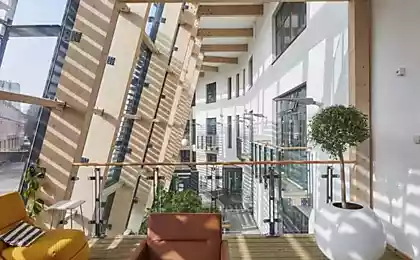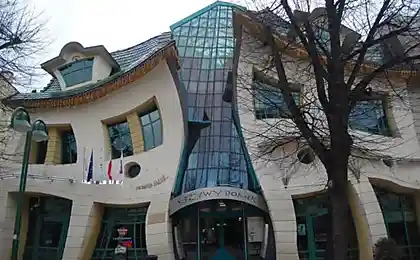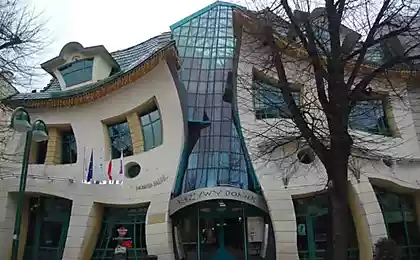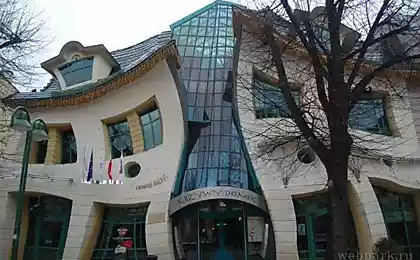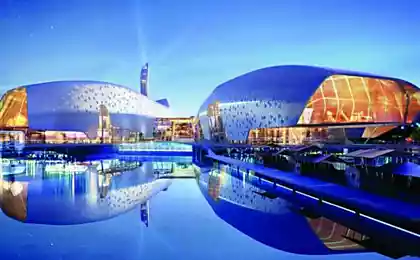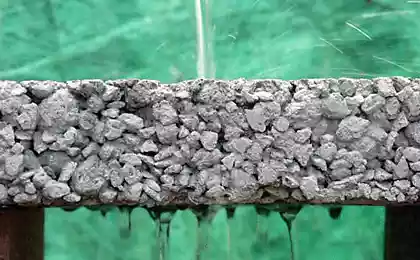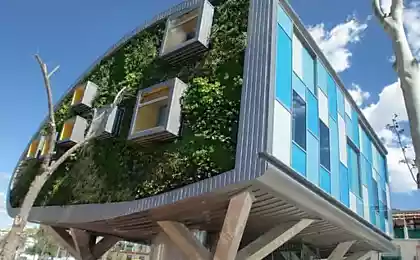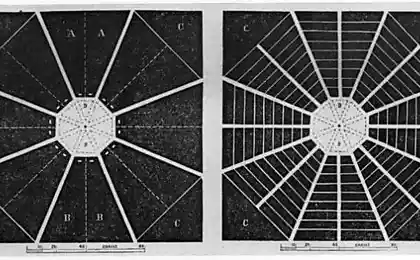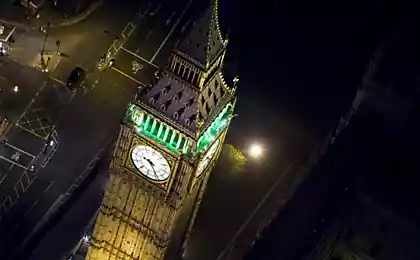215
City of the future. Bradford: The Bright Building, a building that produces oxygen
Green construction is one of the main trends in the development of the most modern and developed cities in the world: London, Toronto, Singapore.
It involves the creation of buildings and their operation with minimal impact on the environment, energy efficiency, constant growth in the quality of construction and comfort of the internal environment. Confirm the “green” status of the building by certification to the international standard, the most popular in Europe is the BREEAM standard. He was born in the UK in 1990 as part of the country’s overall green economy due to legislation and high energy tariffs. But over time, the construction of buildings according to the BREEAM standard went beyond the country and gained popularity in the Netherlands, Sweden, France, China, Turkey, Poland, Germany and even in the United States.
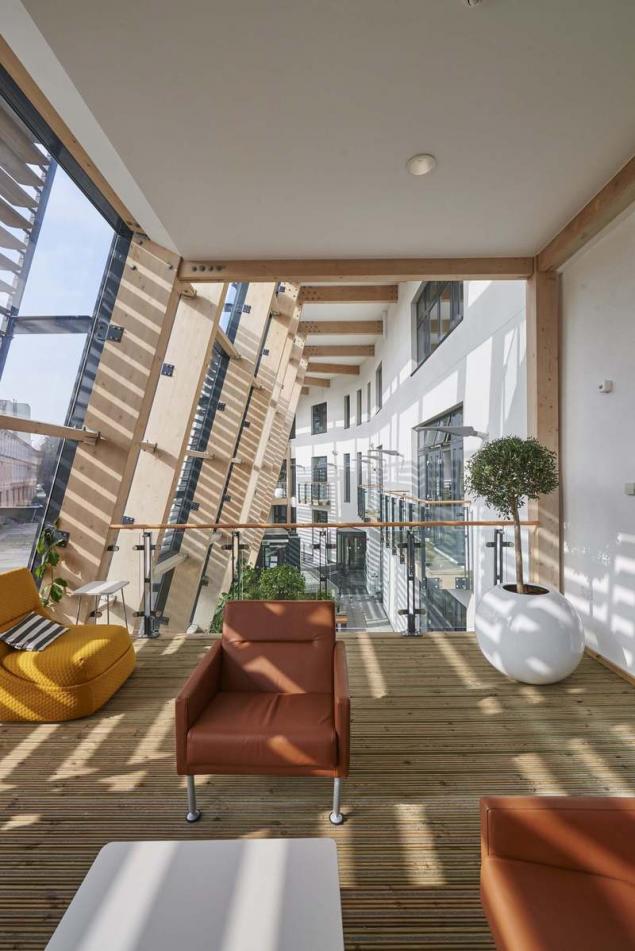
In all countries, except the UK, where BREEAM is mandatory for the construction of municipal facilities and housing, green certification is the goodwill of the developer. At the same time, in each of these countries, the use of BREEAM technologies in the building allows the building owner not only to be responsible for the environment, but also to save significantly on operating costs.
One of the most striking examples of modern green architecture is the Bright Building University of Bradford, built in the homeland of BREEAM in the UK, in the city of Bradford. At the international award BREEAM Awards 2016 in the category of buildings of education and science Bright Building University of Bradford received the highest rating in the history of the award – 95.2%. Why is this building so interesting?
Today – The Bright Building is the largest building in the world, almost entirely created from natural or recycled materials: wooded plant stems, organic concrete made of plant materials and lime. Like other plant products, such concrete absorbs carbon dioxide and produces oxygen. Just imagine, each square meter of the wall absorbs as much CO2 as a person emits in 4.5 hours of breathing in a calm state - 110 kg!
The building cost the British 6.5 million pounds. On its creation 7 long years worked well-known in the UK architectural firm Farrel & Clark. One of the requirements for architects was to create a project that will not only be an object of architecture, but also at the same time a visual tutorial for students. Its task is to popularize in young minds the idea of the synergy of science, technology, engineering and exact sciences, on which the philosophy of the university is built.

What is the effect of “green” technologies Bright Building brings almost during the operation of the building? First, high energy efficiency. Total electricity consumption is 30kWh/m2 per year, which is responsible for the environment and is also very profitable economically in the UK, where electricity rates are among the highest in Europe at around 20 cents kWh. Energy efficiency is achieved due to the fact that there is no central gas pipeline and electricity in the building.
Instead of central communications, the innovative passive solar design uses southern walls to accumulate and redistribute warm air masses. Solar chimneys provide natural ventilation, heating and lighting, while photovoltaic panels help heat pumps operate. For emergencies, the building provides a connection to the university’s self-generated private power supply network.
Secondly, the operation of the building is environmentally friendly for people and the environment: natural ventilation, recycled or natural materials for interior decoration, a rainwater collection system and its heating using solar thermal energy, the use of exclusively LED lamps and T5 fluorescent lamps. Thirdly, through the use of costroconcrete, the building is an oxygen generator.
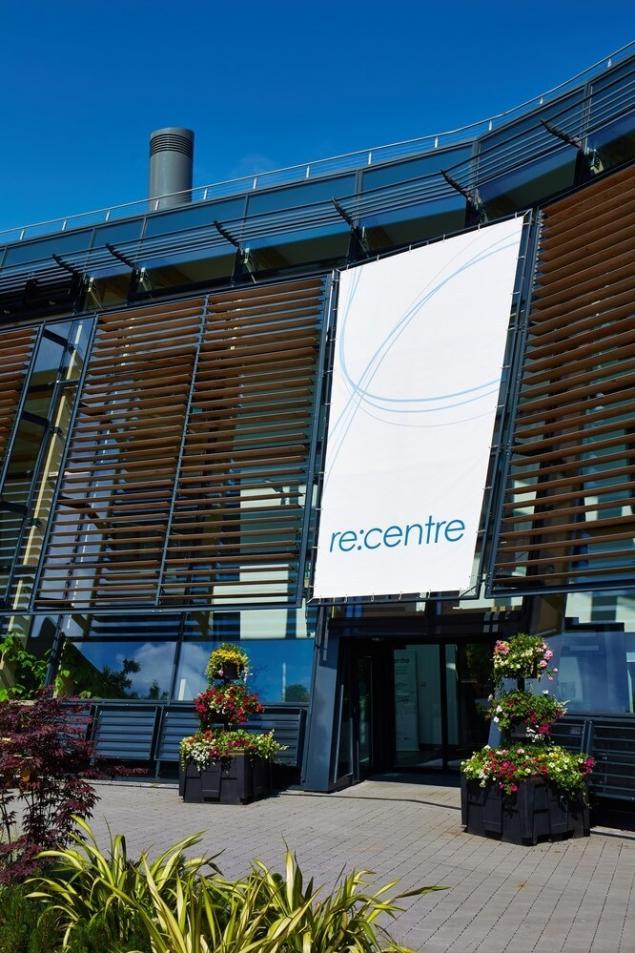
Pioneers of “green” construction exist in Ukraine. In August 2016, ASTARTA BC received the first green construction certificate in Ukraine BREEAM International 2013 (Interim). In the construction and further operation of the BC, environmentally friendly materials, modern engineering, intelligent control systems are used, energy efficiency is 20% higher than the existing standard.
It is important to note that ASTARTA is more than a business center, it is a complete business district. It is located at the intersection of Yaroslavlskaya, Nizhny Val and Naberezhnye-Kreshchatytskaya streets. It includes not only office buildings, but also all the services necessary for a modern resident of the metropolis - an outdoor club, shops, a zone of household services, restaurants, cafes and many other services. ASTARTA is the first and only business district in Ukraine with its own recreation area in the BC courtyard - a square, a fountain, terraces and a lawn with sun loungers. published
Source: biz.nv.ua/fututown/gorod-budushchego-300545.html
It involves the creation of buildings and their operation with minimal impact on the environment, energy efficiency, constant growth in the quality of construction and comfort of the internal environment. Confirm the “green” status of the building by certification to the international standard, the most popular in Europe is the BREEAM standard. He was born in the UK in 1990 as part of the country’s overall green economy due to legislation and high energy tariffs. But over time, the construction of buildings according to the BREEAM standard went beyond the country and gained popularity in the Netherlands, Sweden, France, China, Turkey, Poland, Germany and even in the United States.

In all countries, except the UK, where BREEAM is mandatory for the construction of municipal facilities and housing, green certification is the goodwill of the developer. At the same time, in each of these countries, the use of BREEAM technologies in the building allows the building owner not only to be responsible for the environment, but also to save significantly on operating costs.
One of the most striking examples of modern green architecture is the Bright Building University of Bradford, built in the homeland of BREEAM in the UK, in the city of Bradford. At the international award BREEAM Awards 2016 in the category of buildings of education and science Bright Building University of Bradford received the highest rating in the history of the award – 95.2%. Why is this building so interesting?
Today – The Bright Building is the largest building in the world, almost entirely created from natural or recycled materials: wooded plant stems, organic concrete made of plant materials and lime. Like other plant products, such concrete absorbs carbon dioxide and produces oxygen. Just imagine, each square meter of the wall absorbs as much CO2 as a person emits in 4.5 hours of breathing in a calm state - 110 kg!
The building cost the British 6.5 million pounds. On its creation 7 long years worked well-known in the UK architectural firm Farrel & Clark. One of the requirements for architects was to create a project that will not only be an object of architecture, but also at the same time a visual tutorial for students. Its task is to popularize in young minds the idea of the synergy of science, technology, engineering and exact sciences, on which the philosophy of the university is built.

What is the effect of “green” technologies Bright Building brings almost during the operation of the building? First, high energy efficiency. Total electricity consumption is 30kWh/m2 per year, which is responsible for the environment and is also very profitable economically in the UK, where electricity rates are among the highest in Europe at around 20 cents kWh. Energy efficiency is achieved due to the fact that there is no central gas pipeline and electricity in the building.
Instead of central communications, the innovative passive solar design uses southern walls to accumulate and redistribute warm air masses. Solar chimneys provide natural ventilation, heating and lighting, while photovoltaic panels help heat pumps operate. For emergencies, the building provides a connection to the university’s self-generated private power supply network.
Secondly, the operation of the building is environmentally friendly for people and the environment: natural ventilation, recycled or natural materials for interior decoration, a rainwater collection system and its heating using solar thermal energy, the use of exclusively LED lamps and T5 fluorescent lamps. Thirdly, through the use of costroconcrete, the building is an oxygen generator.

Pioneers of “green” construction exist in Ukraine. In August 2016, ASTARTA BC received the first green construction certificate in Ukraine BREEAM International 2013 (Interim). In the construction and further operation of the BC, environmentally friendly materials, modern engineering, intelligent control systems are used, energy efficiency is 20% higher than the existing standard.
It is important to note that ASTARTA is more than a business center, it is a complete business district. It is located at the intersection of Yaroslavlskaya, Nizhny Val and Naberezhnye-Kreshchatytskaya streets. It includes not only office buildings, but also all the services necessary for a modern resident of the metropolis - an outdoor club, shops, a zone of household services, restaurants, cafes and many other services. ASTARTA is the first and only business district in Ukraine with its own recreation area in the BC courtyard - a square, a fountain, terraces and a lawn with sun loungers. published
Source: biz.nv.ua/fututown/gorod-budushchego-300545.html
The city of the future. Bradford: The Bright Building is a building that produces oxygen
The concept car Honda NeuV with artificial intelligence
